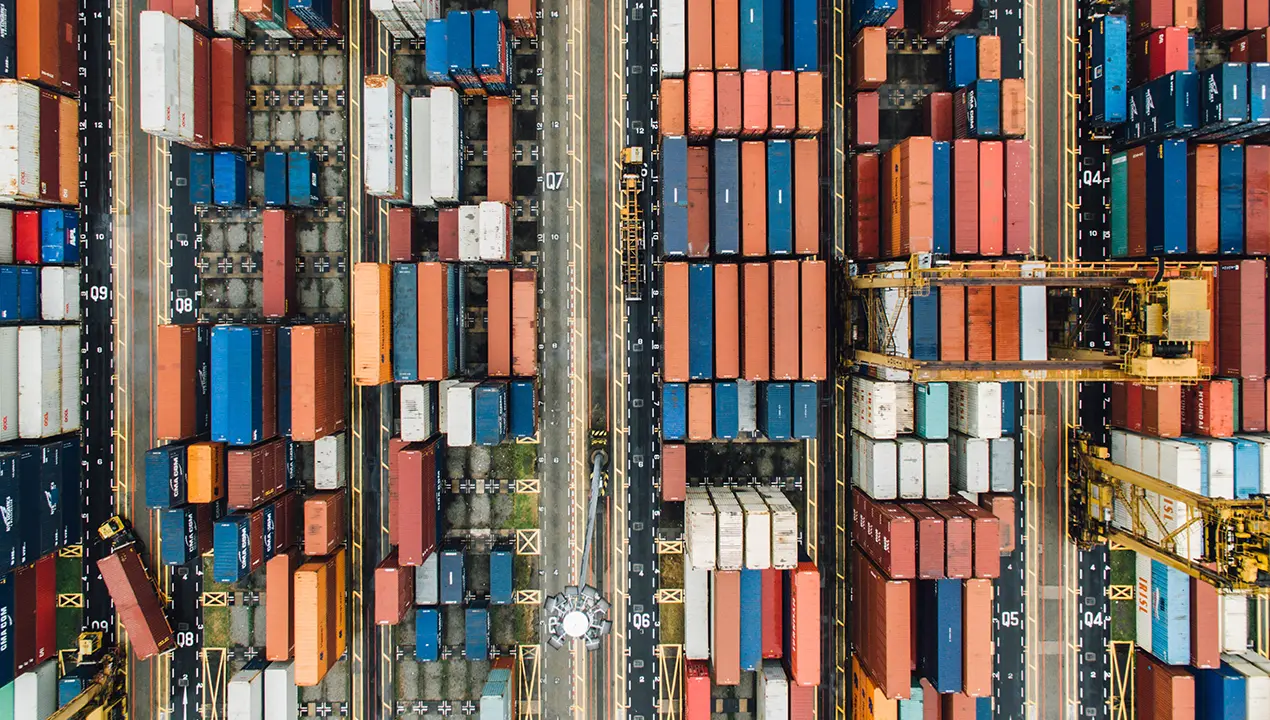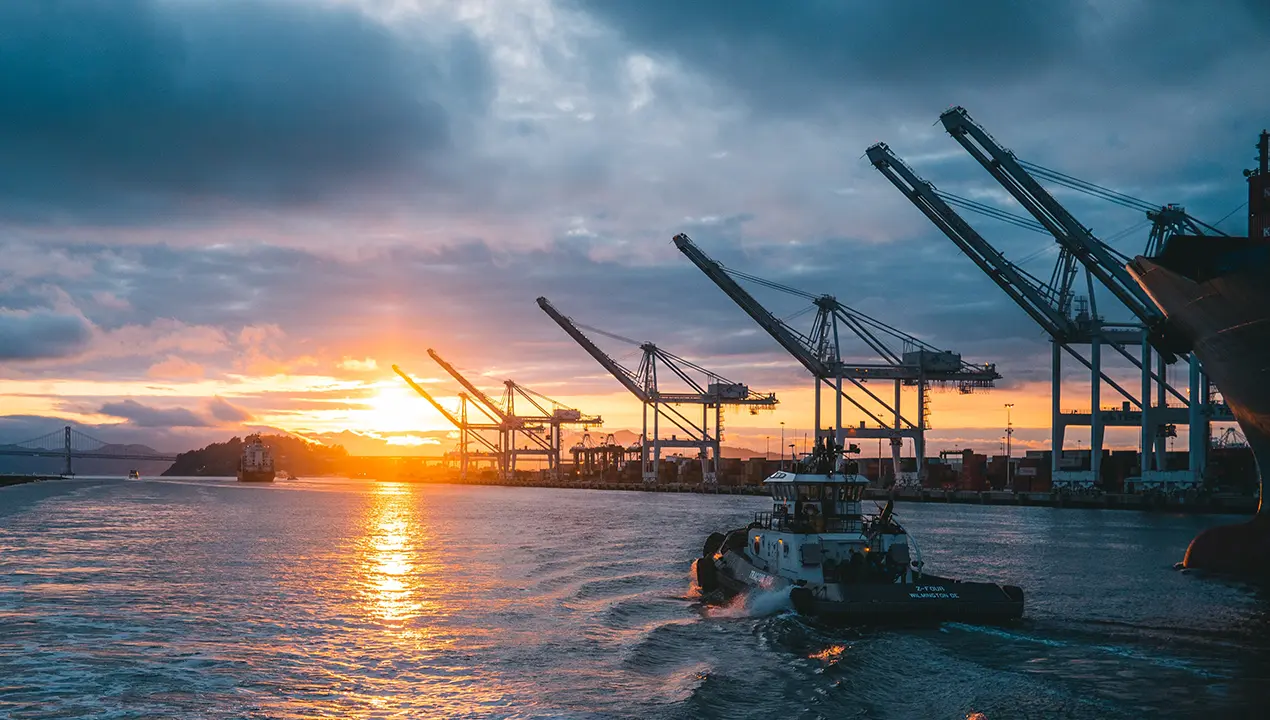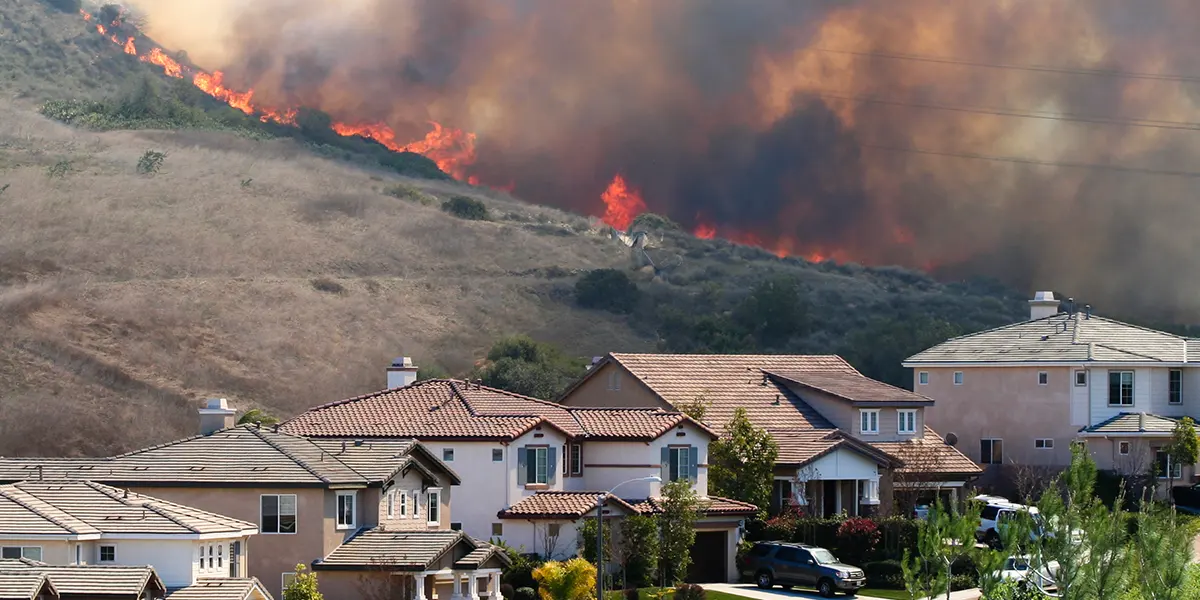Businesses face increasing pressure to address their operational exposures to more frequent and severe climate-related physical risks. The unrelated climate event of the Suez Canal blockage by the Ever Given cargo vessel that ran aground in 2021 forced 367 ships to back up in a vital shipping artery that froze $10B worth of goods showcased the vulnerability of the global supply chain already disjointed by the Covid-19 pandemic. However, this trade flow disruption was colossal to the worldwide supply chain but temporary.
As natural disasters become more frequent with climate change, supply chain convulsions will become more familiar, inducing a specific climate change polycrisis - interrupting production, inflating prices and reducing revenues. How can companies' supply chains become more resilient to climate risks?
The Big Picture
With a focus on speed and efficiency to create economic value, modern supply chains are complex intertwined strings of potential bottlenecks that facilitate the production of most items, from vehicles to vegetables. The global supply chain is worth almost $20 trillion annually. A modern supply chain comprises suppliers, contract manufacturers, distributors, logistics providers, original equipment manufacturers (OEMs), wholesalers, and retailers, showcasing the complexity of a modern supply chain from raw material sourcing to end customers. However, extreme weather can ground airfreight, delay rail, or re-direct ships, disrupting the supply chain throughout complex and interlinked value chains.
The risk of severe disruption to heavy rare earth production due to extreme precipitation may increase two to three times by 2030. To put it straight, entities can’t afford to experience the negative consequences of physical climate-related risks, including flooding, droughts and hurricanes. Kyle Meng emphasises this by “What we just went through with Covid is a window to what climate could do.” Companies are dramatically aware of these risks. 67% of CEOs say they will increase investment in disruption detection and innovation processes to avoid supply chain disruption. However, adapting to climate change is a complex task for economic agents in general, especially with complex supply chains and pathways being unclear on how to do so.

Climate Chains
Last year, the magnitude of climate change already caused widespread record low river levels in Europe, China, and the US in the summer of 2022, causing transport performance to drop ten to thirty per cent on average. These had knock-on effects across the globe, with factories and agriculture reducing production, cargo ships having to carry smaller loads, and heightened risks of power blackouts for millions of people. Climate solutions for global supply chains aim to raise ports and other coastal infrastructure to cope with rising sea levels. Supply chains have been identified as “efficient but brittle – vulnerable to breaking down in the face of a pandemic, a war or a natural disaster. Because of outsourcing, off-shoring and insufficient investment in resilience, many supply chains have become complex and fragile.”
The reliance on maritime transport for global trade has invigorated supply chain bottlenecks. 80% of international trade is carried by ships at some point, with maritime trade volumes set to triple by 2050. Vessels have become progressively more significant, difficult, and costly to rescue when climate events disrupt maritime vessels. Mark van Koningsveld stated, “There has been a lot more attention on the impact of shipping on the climate than on the impact of the climate on shipping.” And of all climate risks, uncertain rising sea levels are potentially the largest. Inundations potentially threaten most of the world’s 2,700+ coastal ports that generally lie a few feet to 15 feet above sea level. Supply chains as complex as maritime transport relies on vessels and networks of roads, rail and rivers to transport cargo. In turn, shipping companies need an overview of the big picture. Furthermore, indirect exposure to physical climate risks from suppliers and customers can be challenging to identify. Exampled by heat and floods that affect firms’ production facilities directly and indirectly through transportation links and other local infrastructure.
Supply chain complexity entails operational risk management in response to climate change, which is especially important for firms with extensive international production networks. The critical concern for companies is that climate change will turn assets and liabilities, increase supply chain disruption, undermine competitive advantage, and lead to financial losses.

Rising Exposures
As supply chains have increased complexity, companies' risk management needs have expanded. Strategies to understand their supply chains remain redundant and costly to avoid all climate risks. The perceived perception when reducing climate risks is that the value of additional revenue during a disruption compensates for the cost of minimising production issues. "The risk from climate is so distributed across all aspects of the system, it's hard for specific entities to have the incentive to try to address it," stated Austin Becker. A setback that is showcased by companies' short-term decision-making processes that prevent organisations from supply chain planning for climate change threats, which is increasingly essential to running a globally dispersed supply chain.
Climate change can potentially exacerbate supply chain management's (SCM) objectives:
- Costs: Increasing and variability costs when producing goods and services, resetting supply chains and rebuilding inventories from continuing disruptions.
- Disruption: The slow delivery of goods and services will impact company customer attitudes and profits.
- Quality: The quality of goods and services to be reduced for customers.
- Uncertainty: The magnitude of supply chain disruptions will increase, making it difficult for supply chain actors to understand where the risk will originate in more complex and intertwined supply chains.
The complexities and individualism of each supply chain mean firms must begin by being aware of the integration of their SCM objectives and the need to assess their specific supply chain features individually. But to initially overcome any climate risk to achieve these SCM objectives, companies must be aware of their hotspots. Kamil Kluza, chief product officer at Climate X, believes “companies need to understand the risks and where their hotspots are. Although climate change is a global problem, the way it affects individual companies will be very location-specific”.
The Right Tools at the Right Time
Global supply chains have had considerable challenges and will continue to do so well into future decades. The corporate world is under increasing pressure to insulate supply chains from pandemic-style disruption and simultaneously decarbonise operations to meet increasing regulation and consumer pressures. Not only do incumbents need to cooperate on a larger scale to overcome disruptive climate risk, but they must also incorporate critical climate data to identify hotspots and ultimately achieve any SCM objectives. “It is the data that is the problem,” said Michel Roger from Accenture. The ability to translate it into meaningful action is a problem, especially when facing the unpredictability of climate change across supply chains.
Companies need to harness and embrace their access to advanced climate data analytics to become more resilient. Ensuring that they can identify climate risk hotspots and develop realistic business contingency plans (BCP) to manage and, in some ways, create opportunities with particular climate-related risks. With the tool of climate-relate data, supply chain professionals across industries can substantially overcome the challenges of more dispersed and complex supply chains facing increasing climate risk disruptions to protect businesses today and into the future.
Sources
- Baldwin R, Freeman R. 2022. Risks and Global Supply Chains: What We Know and What We Need to Know. Annu. Rev. Econ. 14: Submitted. DOI: 10.1146/annurev-economics-051420-113737.
- Carvalho, V., Nirei, M,. Saito, Y,. Tahbez-Salehi, A,.Supply Chain Disruptions: Evidence from the Great East Japan Earthquake, 2020, https://vasco-m-carvalho.github.io/pdfs/JapanEQ.pdf
- Toreti, A., Bavera, D., Acosta Navarro, J., Cammalleri, C., de Jager, A., Di Ciollo, C., Hrast Essenfelder, A., Maetens, W., Magni, D., Masante, D., Mazzeschi, M., Niemeyer, S., Spinoni, J., Drought in Europe August 2022, Publications Office of the European Union, Luxembourg, 2022, doi:10.2760/264241, JRC130493.
- Bloomberg (2022) Historic Drought Threatens to Cripple European Trade.
https://www.bloomberg.com/news/features/2022-08-10/europe-s-low-water-levels-threaten-rhine-river-hit-80b-trade-lifeline - Forbes (2023) 2023 Supply Chain Predictions: Resiliency, Sustainability And Visibility Set New Expectations. https://www.forbes.com/sites/sap/2022/12/15/2023-supply-chain-predictions-resiliency-sustainability-and-visibility-set-new-expectations/?sh=2eebcfb052cd
- KPMG (2022) Six key trends impacting global supply chains in 2022. https://home.kpmg/sg/en/home/insights/2022/03/six-key-trends-impacting-global-supply-chains-in-2022.html
- McKinsey (2020) Could climate become the weak link in your supply chain? https://www.mckinsey.com/capabilities/sustainability/our-insights/could-climate-become-the-weak-link-in-your-supply-chain
- Reuters (2023) As transport firms try to steer a path through troubled waters, they look for new partnerships.
https://www.reuters.com/business/sustainable-business/transport-firms-try-steer-path-through-troubled-waters-they-look-new-2023-04-13/ - The New York Times (2022) Climate Change Could Worsen Supply Chain Turmoil
https://www.nytimes.com/2022/09/08/business/economy/climate-change-supply-chain.html - The New York Times (2022) Supply Chain Hurdles Will Outlast Pandemic, White House Says.
https://www.nytimes.com/2022/04/14/business/economy/biden-supply-chain.html - OECD (2023) Ocean shipping and shipbuilding. https://www.oecd.org/ocean/topics/ocean-shipping/
- World Economic Forum (2021) The Suez Canal in Numbers. https://www.weforum.org/agenda/2021/03/the-suez-canal-in-numbers/





